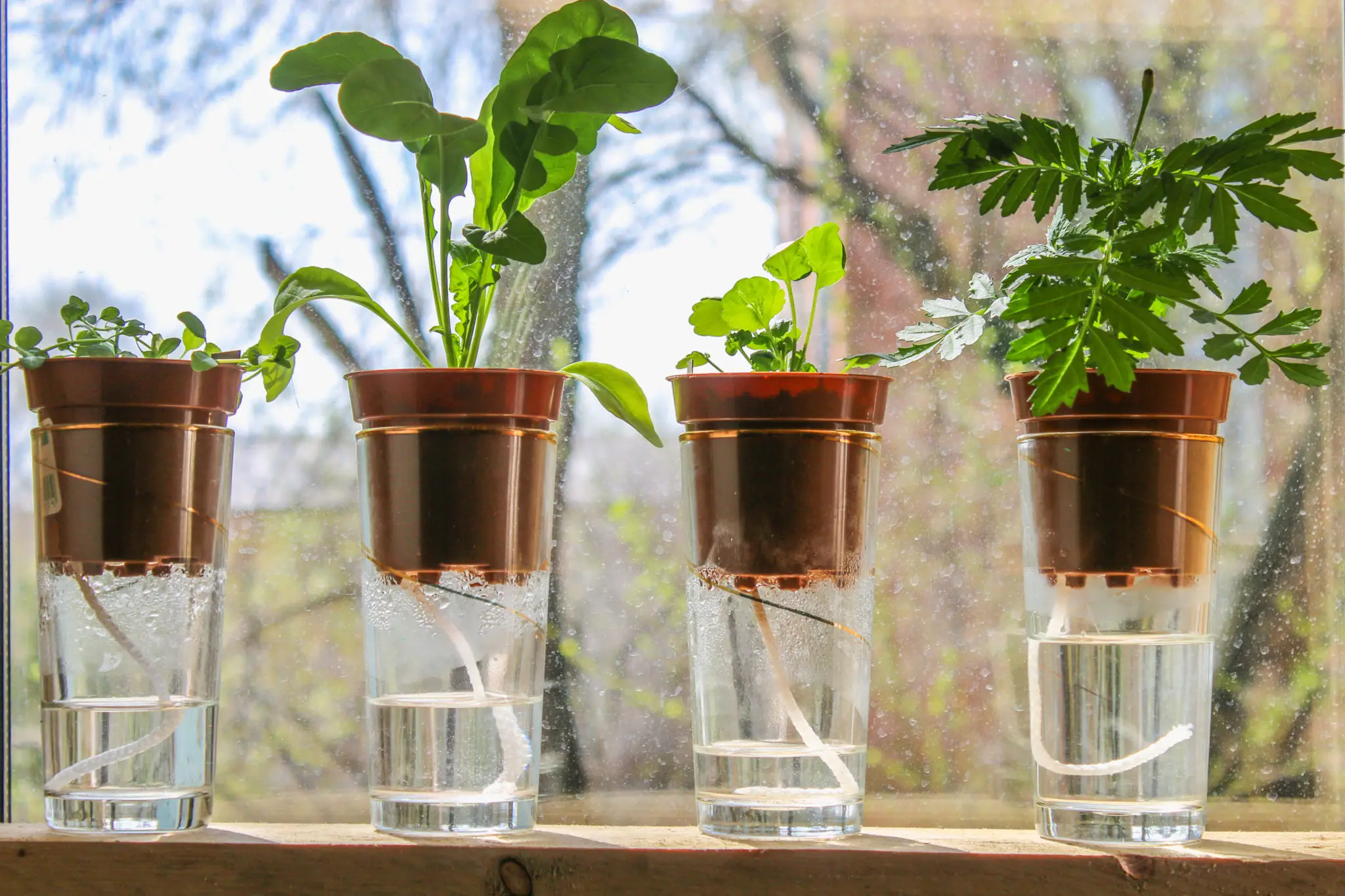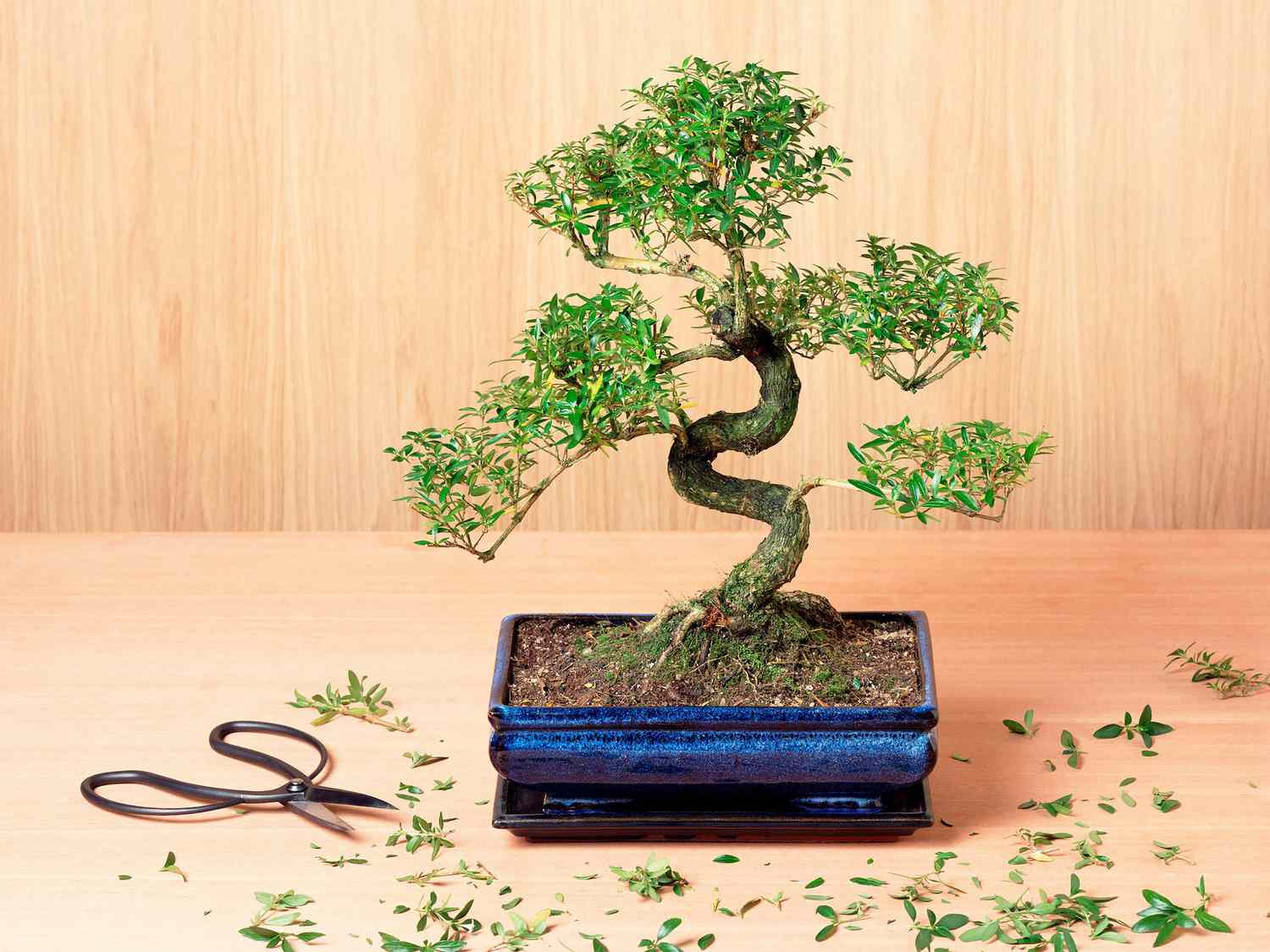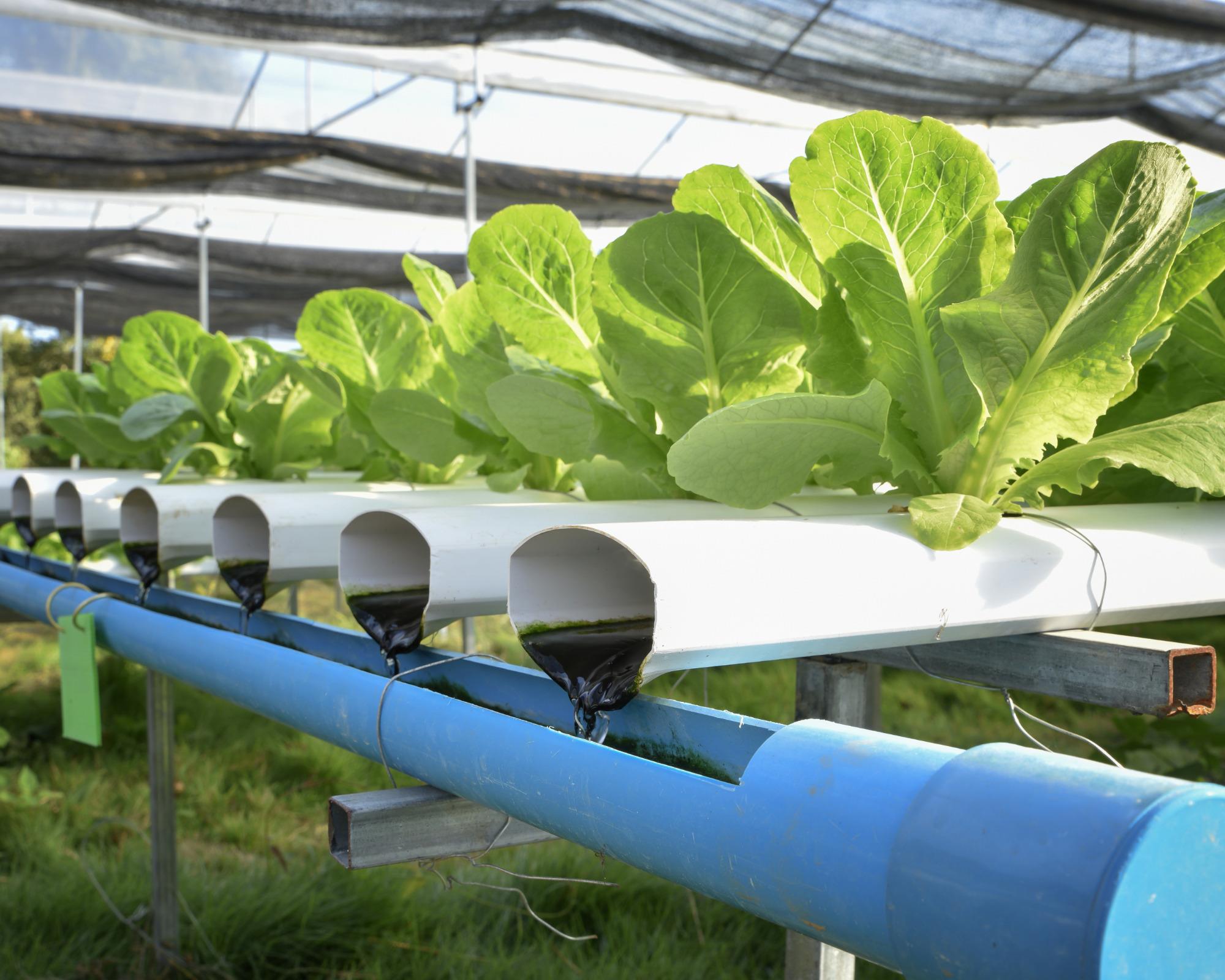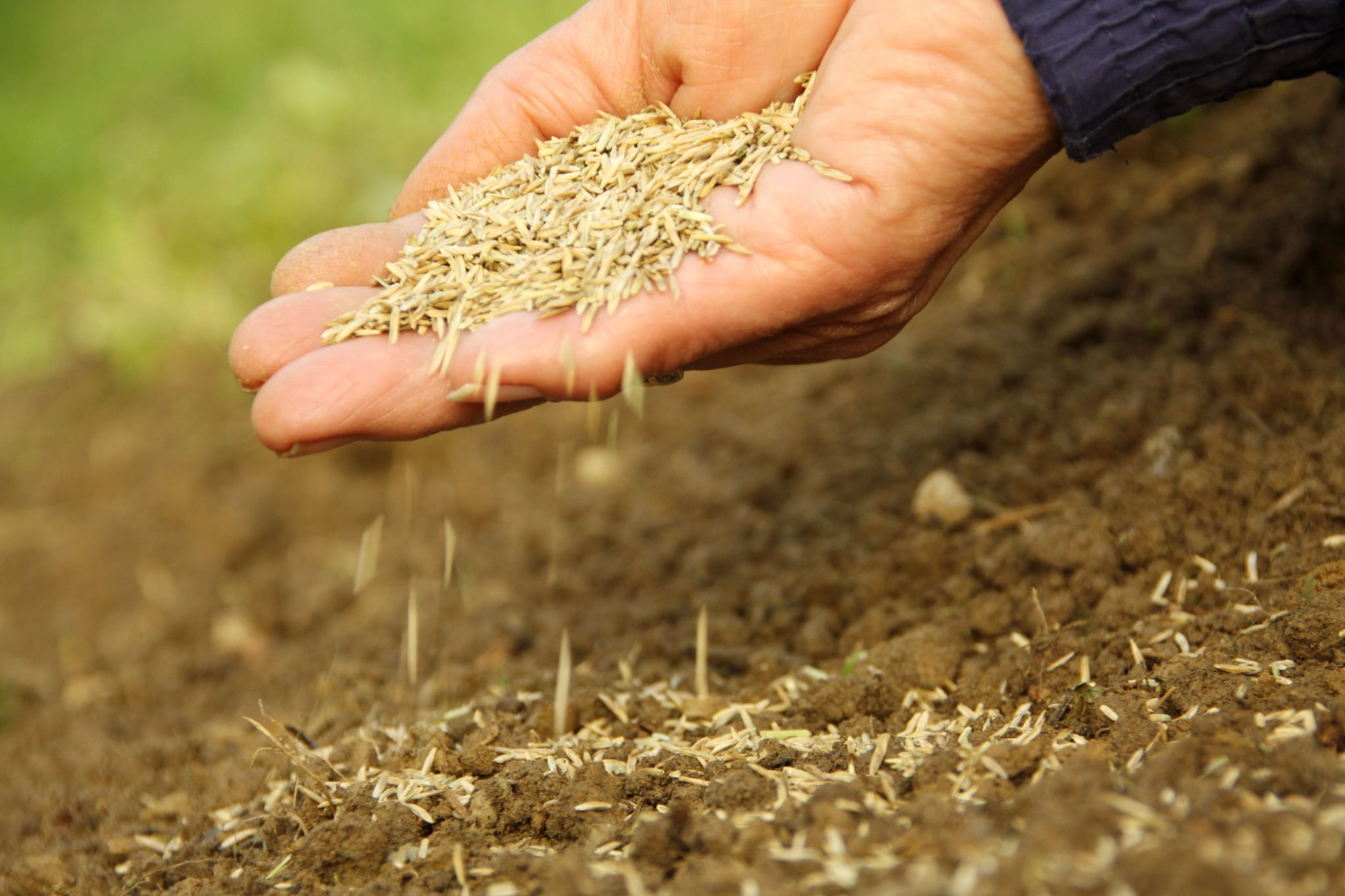Home>Gardening Tips and Tricks>Eco-Friendly Gardening>How Does Hydroponics Work


Eco-Friendly Gardening
How Does Hydroponics Work
Modified: January 22, 2024
Discover how hydroponics, an eco-friendly gardening technique, works. Learn about the innovative systems and sustainable practices used to grow plants without soil.
(Many of the links in this article redirect to a specific reviewed product. Your purchase of these products through affiliate links helps to generate commission for Chicagolandgardening.com, at no extra cost. Learn more)
Table of Contents
- Introduction
- Definition of Hydroponics
- History of Hydroponics
- Benefits of Hydroponics
- Basic Principles of Hydroponics
- Types of Hydroponic Systems
- Nutrient Solutions in Hydroponics
- Managing pH and EC Levels in Hydroponics
- Choosing Plants for Hydroponics
- Maintenance and Care in Hydroponics
- Challenges and Limitations of Hydroponics
- Conclusion
Introduction
As awareness of the impact of traditional farming methods on the environment grows, more and more people are turning to eco-friendly gardening practices. One such practice that has gained significant popularity is hydroponics. Hydroponics is a soilless gardening technique that allows plants to grow in nutrient-rich water, providing a sustainable and efficient way of growing crops.
Hydroponics offers several advantages over conventional gardening methods. It conserves water, reduces the use of harmful pesticides, eliminates soil erosion, and allows for year-round cultivation. In addition, it maximizes crop yield and minimizes the space needed for cultivation, making it ideal for urban environments or areas with limited arable land.
In this comprehensive guide, we will explore the fascinating world of hydroponics. We will delve into the history, benefits, basic principles, and various systems of hydroponic gardening. We will also discuss the importance of properly managing nutrient solutions, pH, and EC levels, as well as choosing suitable plants for hydroponics. Additionally, we will provide insights into maintenance and care practices required for successful hydroponic cultivation.
While hydroponics offers many advantages, it is not without its challenges. We will explore the limitations and potential pitfalls of hydroponic gardening to help you navigate them effectively. By the end of this guide, you will have a solid understanding of how hydroponics works and be well-equipped to embark on your own eco-friendly gardening journey.
Definition of Hydroponics
Hydroponics is a method of growing plants without soil, where the plants obtain essential nutrients directly from a nutrient-rich water solution. The word “hydroponics” originates from the Greek words “hydro”, meaning water, and “ponos”, meaning labor. In essence, hydroponics is the practice of cultivating plants in water.
In hydroponics, instead of relying on soil as a medium for plant growth, a variety of inert materials such as perlite, vermiculite, coconut coir, or rockwool are used to anchor the plants and provide support. The roots of the plants are immersed in the nutrient solution, which is carefully balanced to provide all the necessary mineral elements required for optimum growth.
By eliminating the need for soil, hydroponics offers significant advantages. The controlled environment of hydroponic systems allows for precise control over factors such as nutrient availability, pH levels, and water quality. This results in faster growth, higher yields, and greater control over the plant’s health and development.
It is worth noting that hydroponics is a versatile technique that can be used to cultivate a wide range of plants, from leafy greens and herbs to fruits and flowers. The ability to grow a variety of crops hydroponically makes it an attractive option for both commercial growers and home gardeners.
Overall, hydroponics provides an innovative and sustainable approach to gardening, allowing plants to thrive without soil while conserving resources and minimizing environmental impact.
History of Hydroponics
The concept of hydroponics dates back thousands of years, with early civilizations experimenting with growing plants without soil. The Hanging Gardens of Babylon, one of the Seven Wonders of the Ancient World, is believed to have employed a form of hydroponics to sustain the lush vegetation.
However, it was not until the 19th century that modern hydroponics began to take shape. In 1860, German botanist Julius von Sachs conducted extensive research on plant nutrition and proposed the idea that plants could grow in a mineral nutrient solution instead of soil.
One of the key milestones in the history of hydroponics came in the 1930s when Dr. William F. Gericke, a professor at the University of California, coined the term “hydroponics” and conducted pioneering research on soilless plant cultivation. Gericke successfully grew tomato plants hydroponically, showcasing the potential of this innovative gardening method.
During World War II, hydroponics gained further attention as a means to address food scarcity. Hydroponic systems were developed and implemented in military and civilian applications to grow fresh produce in controlled environments, providing a consistent food source for troops and civilians.
Throughout the 20th century, advancements in technology and scientific understanding propelled hydroponics into mainstream agriculture. NASA’s research on hydroponics for space mission food production further advanced the development of hydroponic systems.
Today, hydroponics is extensively used in both commercial agriculture and home gardening. It is particularly popular in urban farming, where space limitations and soil quality issues make traditional farming challenging. The advent of vertical farming and greenhouse technologies has further expanded the possibilities of hydroponic cultivation.
Hydroponics continues to evolve with new innovations and techniques, such as aeroponics and aquaponics, adding further dimensions to soilless gardening. It has become an integral component of sustainable farming practices and is increasingly recognized as a viable solution for food production in a world facing environmental challenges.
Benefits of Hydroponics
Hydroponics offers numerous benefits that make it an appealing gardening method for both commercial growers and home gardeners.
-
Water Conservation: Hydroponic systems use significantly less water compared to traditional soil-based farming methods. The closed-loop systems recycle and reuse water, resulting in water savings of up to 90%.
-
No Soil Erosion: Since hydroponics eliminates the need for soil, there is no risk of erosion that can deplete nutrients and harm the ecosystem. This makes it a sustainable and environmentally friendly gardening method.
-
Higher Yields: Hydroponics enables plants to receive an optimal balance of nutrients, water, and oxygen, resulting in faster growth and increased yields. Studies have shown that hydroponic systems can produce up to four times more crops compared to traditional farming methods.
-
Year-Round Cultivation: Hydroponics allows for year-round cultivation regardless of the weather conditions. Controlled environments, such as greenhouses, provide a consistent climate, enabling the growth of crops throughout the year.
-
Space Efficiency: Hydroponic systems require less space compared to traditional farming methods. Vertical growing techniques, such as vertical towers or stacked systems, enable multiple layers of plant cultivation, maximizing the use of space.
-
Pesticide and Herbicide Reduction: In hydroponics, pests and diseases can be managed more effectively, reducing the need for harmful pesticides and herbicides. This not only ensures the production of healthier crops but also minimizes environmental contamination.
-
Nutrient Control: With hydroponics, growers have precise control over the nutrient solution, ensuring that plants receive the right balance of minerals for optimal growth. This eliminates the guesswork and variability associated with soil-based farming.
-
Reduced Weeding: Eliminating soil means fewer weeds, leading to reduced labor and time spent on weeding, making hydroponics a more efficient gardening method.
-
Accessibility: Hydroponics can be practiced in various settings, including urban areas and regions with poor soil quality. By bringing food production closer to consumers, hydroponics supports local and sustainable food systems.
Overall, the benefits of hydroponics make it an attractive option for those looking to grow plants in a sustainable, efficient, and controlled manner.
Basic Principles of Hydroponics
Understanding the basic principles of hydroponics is essential for successful soilless gardening. Here are the key principles to keep in mind:
- Root oxygenation: In hydroponics, it’s crucial to provide adequate oxygen to the plant roots since they are submerged in water or a nutrient solution. Oxygenation can be achieved through the use of air stones, air pumps, or by maintaining a proper flow of oxygen-rich water.
- Nutrient solution: Hydroponics relies on a nutrient solution that provides essential minerals for plant growth. The solution should contain a balanced blend of macronutrients (nitrogen, phosphorus, and potassium) and micronutrients (iron, copper, zinc, etc.) required for healthy plant development.
- pH level: Monitoring and adjusting the pH level of the nutrient solution is crucial in hydroponics. Most plants thrive within a pH range of 5.5 to 6.5, although some variations exist depending on the specific plant species. pH levels can be adjusted using pH up or pH down solutions.
- Electrical Conductivity (EC) level: EC level measures the concentration of dissolved nutrients in the water or nutrient solution. It helps determine the nutrient strength and ensures that plants receive an optimal nutrient balance. Monitoring and adjusting the EC level ensures that plants receive the appropriate amount of nutrients.
- Lighting: Providing adequate light is essential for plant photosynthesis in hydroponics. Natural sunlight is ideal, but artificial grow lights, such as fluorescent, LED, or high-pressure sodium (HPS), can be used to supplement or replace natural light.
- Temperature control: Maintaining an optimal temperature range is vital for hydroponic plant growth. Most plants thrive in temperatures between 65-80°F (18-27°C). Proper ventilation, fans, and cooling or heating systems should be employed to maintain optimal temperature levels.
- Hygiene and cleanliness: Maintaining cleanliness in the hydroponic system is crucial to prevent the growth of harmful pathogens. Regular system maintenance, including cleaning of equipment and periodic sterilization, helps minimize the risk of diseases and ensures healthy plant growth.
- Plant support: In hydroponics, plants need support to stay upright since they are not anchored in soil. Various support systems, such as trellises, grow baskets, or net pots, are used to secure plants and prevent them from falling or bending under their weight.
By adhering to these basic principles, you can create an ideal growing environment for your hydroponic plants and achieve healthy growth and abundant yields.
Types of Hydroponic Systems
Hydroponic systems come in various designs and configurations, each suited to different growing preferences and space constraints. Let’s explore some of the most common types of hydroponic systems:
- Deep Water Culture (DWC): In the DWC system, plants are suspended in a nutrient-rich water solution with their roots submerged. An air pump provides continuous oxygenation to the roots. It is a simple and beginner-friendly system that works well for growing leafy greens and herbs.
- Nutrient Film Technique (NFT): In an NFT system, a thin film of nutrient solution flows across a sloped tray, and plant roots are placed in small channels through which the solution passes. The roots absorb the nutrients they need, and the excess solution is collected and recirculated. NFT systems are commonly used for growing quick-growing, shallow-rooted plants such as lettuce and spinach.
- Ebb and Flow (Flood and Drain): The ebb and flow system periodically floods the plant roots with a nutrient solution and then drains it back into a reservoir. This cyclic flooding allows the roots to access oxygen between floodings. Ebb and flow systems are versatile and can accommodate a wide range of plant types.
- Aeroponics: Aeroponic systems suspend plant roots in the air and mist them with a nutrient solution. The roots are exposed to high levels of oxygen, enhancing nutrient absorption. Aeroponic systems promote rapid plant growth and are commonly used for cultivating delicate plants like orchids and strawberries.
- Wick System: Wick systems are one of the simplest hydroponic systems, requiring no pumps or timers. A wick, such as a cotton or nylon rope, delivers the nutrient solution from a reservoir to the plant roots through capillary action. While suitable for smaller plants, wick systems may struggle to provide sufficient nutrient delivery for larger or fast-growing plants.
- Vertical Systems: Vertical hydroponic systems maximize space utilization by allowing plants to grow vertically. These systems can be stacked or utilize wall-mounted panels, utilizing gravity to deliver nutrient solutions. Vertical systems are popular in urban farming and are ideal for growing vine crops, strawberries, or herbs in limited spaces.
These are just a few examples of the many types of hydroponic systems available. Each system has its advantages and challenges, and the choice depends on factors such as available space, plant varieties, and personal preference. By selecting the right system, you can create an efficient and productive hydroponic garden.
Nutrient Solutions in Hydroponics
Nutrient solutions are a vital component of hydroponic systems, providing the essential minerals and elements that plants need for healthy growth and development. These solutions are carefully formulated to mimic the nutrient composition found in soil, ensuring that plants receive the right balance of nutrients.
The nutrient solution typically consists of macronutrients, micronutrients, and occasionally, beneficial additives. Macronutrients include nitrogen (N), phosphorus (P), and potassium (K), which are essential for plant growth. Micronutrients such as iron (Fe), zinc (Zn), and manganese (Mn) are required in smaller quantities but are equally important for plant health.
The composition and strength of the nutrient solution will vary depending on the specific plant species, growth stage, and environmental conditions. Generally, the nutrient solution is prepared by dissolving water-soluble nutrient salts in water. Commercially available hydroponic nutrient solutions provide pre-mixed formulas designed for different plant types and growth stages.
It is important to regularly monitor and adjust the nutrient solution to ensure that plants receive the proper nutrients. The pH level of the solution should be maintained within the recommended range for optimal nutrient availability. Additionally, the Electrical Conductivity (EC) level of the solution should be measured to assess the concentration of nutrients and ensure it falls within the appropriate range for specific plants.
There are also organic and bio-organic nutrient solutions available for those who prefer a more natural approach. These solutions use organic sources of nutrients, such as compost or organic fertilizers, to provide the necessary elements for plant growth.
In hydroponics, nutrient solutions are typically delivered to the plant’s roots through various systems, such as drip irrigation, aeroponics, or nutrient film technique. The solution is carefully managed to prevent over or underfeeding of plants, ensuring they receive the right nutrients at the right time.
Regular monitoring of nutrient levels, pH, and EC is crucial to maintain a healthy and thriving hydroponic system. By providing plants with a well-balanced nutrient solution, you can maximize their growth potential and achieve bountiful harvests.
Managing pH and EC Levels in Hydroponics
The pH and EC levels are critical factors to consider in hydroponics as they directly impact the availability and uptake of nutrients by plants. Understanding how to manage and maintain these levels ensures optimal plant growth and productivity.
The pH level refers to the acidity or alkalinity of the nutrient solution. Most plants thrive in a pH range of 5.5 to 6.5, although some variations exist depending on the specific plant species. To maintain the desired pH level, pH testing kits or digital meters are used to measure the pH of the nutrient solution. If the pH is too high (alkaline), pH down solutions such as phosphoric acid or citric acid can be added to lower the pH. Conversely, if the pH is too low (acidic), pH up solutions such as potassium hydroxide can be used to raise the pH.
Electrical Conductivity (EC) is a measure of the concentration of dissolved nutrient salts in the water or nutrient solution. It helps determine the strength of the solution and ensures that plants receive an appropriate nutrient balance. EC levels can be measured using EC meters or conductivity meters. Different plant varieties have specific requirements for EC levels, and these can vary depending on the growth stage. Adjustments to the nutrient solution’s EC can be made by adding more nutrient salts to increase the EC or diluting the solution with water to decrease the EC.
Maintaining the proper pH and EC levels is crucial for nutrient absorption and plant health. If the pH level is too high or too low, plants may experience nutrient deficiencies even if the nutrients are present in the solution. Imbalances in the EC level can lead to over or underfeeding of the plants, affecting their growth and overall productivity.
Regular monitoring of pH and EC levels is essential. It is recommended to measure these levels at least once a week, or more frequently in larger hydroponic systems or during crucial growth stages. Adjustments should be made gradually to prevent shocks to the plants. Regular nutrient solution changes, typically done every 1-2 weeks, help maintain nutrient balance and prevent the accumulation of excess salts.
It is important to note that different plant species have varying pH and EC preferences. Conduct research or consult specific plant guides to ensure optimal pH and EC levels for your chosen crops.
By carefully managing and adjusting pH and EC levels in hydroponics, you can create an ideal environment for the plants, leading to healthy growth, strong yields, and successful harvests.
Choosing Plants for Hydroponics
When it comes to hydroponics, the choice of plants plays a crucial role in determining the success of your garden. While hydroponics can support the growth of a wide variety of plants, some are better suited for this soilless gardening method than others. Here are key considerations when selecting plants for hydroponics:
- Growth habits: Choose plants that have a compact growth habit or can adapt well to vertical cultivation systems. This helps maximize space utilization and allows for optimal growth and development.
- Fast-growing varieties: Select plants with short maturity periods or fast growth rates. This allows for quicker harvests and continuous crop rotation throughout the year.
- Shallow-rooted plants: Opt for plants with shallow root systems as they are easier to manage in hydroponic systems. This includes many leafy greens, herbs, and certain fruiting plants.
- Tolerance to hydroponic conditions: Consider plants that are known to adapt well to hydroponic environments, such as lettuce, spinach, herbs (e.g., basil, parsley), strawberries, and cherry tomatoes.
- Salinity and pH tolerance: Some plant varieties are more tolerant of saline conditions, which can be beneficial if your water source has high salt content. Additionally, choose plants that thrive within the desired pH range for hydroponics (typically 5.5-6.5).
- Preferred nutrient strengths: Different plants have varying nutrient requirements. Consider plants that can thrive within the nutrient strength range you are capable of offering. This can help streamline your nutrient management practices.
- Desired harvest: Think about the crops you enjoy and want to grow. Whether it’s leafy greens, herbs, fruits, or flowers, match your plant choice to your culinary preferences or market demands.
It is worth noting that experimentation and adaptation are part of the hydroponic journey. While some plant varieties are known to perform well, don’t be afraid to explore and try growing different crops. The beauty of hydroponics lies in its versatility and the ability to cultivate a wide range of plants efficiently and sustainably.
Lastly, consult reliable sources, attend workshops, or seek advice from experienced hydroponic gardeners to gain insights into specific plant requirements and best practices for successful cultivation.
Maintenance and Care in Hydroponics
Maintaining a healthy and thriving hydroponic system requires regular maintenance and care. Here are some key practices to follow:
- Monitor and adjust nutrient levels: Regularly check the pH and EC levels of the nutrient solution to ensure they are within the optimal range for the plants. Make necessary adjustments by adding pH-up or pH-down solutions or modifying the nutrient strength to maintain balance.
- Inspect plant health: Regularly inspect your plants for signs of nutrient deficiencies, pests, or diseases. Check for yellowing leaves, stunted growth, or unusual spots. Promptly address any issues to prevent further damage and maintain plant health.
- Clean and sterilize equipment: Cleanliness is essential in hydroponics to prevent the growth of harmful pathogens. Regularly clean and sterilize equipment, including grow trays, reservoirs, pumps, and tubing. This helps maintain a disease-free environment for your plants.
- Prune and train plants: Encourage healthy growth and shape by pruning excess foliage, removing dead or damaged parts, and training the plants to grow in a desired direction. Pruning promotes airflow and discourages the development of mold or fungal diseases.
- Maintain environmental conditions: Ensure proper ventilation and airflow within the growing area to prevent excessive humidity and the onset of diseases. Pay attention to temperature and humidity levels, as different plants have specific requirements. Use fans, vents, or air conditioning to regulate the environment as needed.
- Monitor and adjust lighting: Monitor the performance and intensity of your grow lights regularly. Replace bulbs as needed and adjust the distance between the lights and plants to ensure they receive the right amount of light for optimal growth.
- Regularly check water levels: Monitor water levels in your reservoir and top it up as needed. Maintaining proper water levels ensures consistent nutrient delivery to the plants and prevents drying out or overflows.
- Rotate crops: Rotate your crops periodically to prevent nutrient imbalances and optimize the use of your hydroponic system. Crop rotation also helps prevent the accumulation of pests and diseases that may target specific plant species.
- Keep records: Maintain a logbook or digital records of your hydroponic activities, including pH and EC measurements, nutrient changes, plant progress, and any issues encountered. This helps you track the performance of your system and make informed adjustments in the future.
Consistency is key in hydroponics. Regularly follow these maintenance and care practices to ensure the overall health and success of your hydroponic garden. With proper maintenance, you can enjoy bountiful harvests and a thriving ecosystem in your soilless garden.
Challenges and Limitations of Hydroponics
While hydroponics offers numerous benefits, it also has its fair share of challenges and limitations. Understanding these can help you navigate potential obstacles and make informed decisions in your hydroponic gardening endeavors:
- Initial setup costs: Hydroponic systems can have higher initial costs compared to traditional gardening methods. The expense is primarily attributed to the need for specialized equipment, such as grow lights, pumps, and nutrient solutions.
- Technical knowledge and skills: Hydroponics requires a certain level of technical knowledge and skills to properly set up and maintain the system. Understanding nutrient requirements, pH management, and troubleshooting plant health issues may involve a learning curve for beginners.
- Monitoring and maintenance: Hydroponics demands regular monitoring and maintenance to ensure proper nutrient levels, pH balance, and environmental conditions. This can require time and diligence, especially during plant growth stages that demand more attention.
- Dependency on electricity: Hydroponic systems often rely on electricity to power pumps, lights, and environmental control equipment. Power outages or disruptions can affect plant health, emphasizing the need for backup power sources or contingency plans.
- Pathogen management: The absence of soil as a natural barrier means hydroponic systems are susceptible to certain pests and diseases. Minimizing the risk of pathogen transmission and maintaining proper hygiene practices are crucial to prevent outbreaks and maintain plant health.
- Plant selection and growth limitations: Although hydroponics can support the growth of a wide variety of plants, some crops may be more challenging to cultivate due to specific nutrient requirements or growth habits. Large plants or those with extensive root systems may require specialized systems to accommodate their growth.
- Infrastructure and space requirements: Hydroponics may require dedicated space and infrastructure to set up a viable system. This can be a challenge for those with limited space or for those looking to retrofit existing structures for hydroponic cultivation.
- Resource management: Proper management of water and nutrient solutions is vital to ensure sustainable and efficient use of resources in hydroponics. Water quality, recycling, and minimizing nutrient waste require careful attention for long-term success.
Overcoming these challenges and limitations in hydroponics often involves continuous learning, adaptation, and embracing the principles of sustainability. By addressing these considerations, you can optimize your hydroponic system and enjoy the benefits of soilless gardening.
Conclusion
Hydroponics offers a sustainable and efficient approach to gardening, allowing plants to thrive without soil while conserving resources and minimizing environmental impact. By understanding the basics of hydroponics, such as the different types of systems, nutrient solutions, and maintenance practices, you can create an optimal environment for your plants to grow and flourish.
Through hydroponics, you can enjoy benefits such as water conservation, higher yields, year-round cultivation, and space efficiency. By carefully selecting appropriate plant varieties and managing pH and EC levels, you can maximize the potential of your hydroponic system and achieve successful harvests.
While challenges and limitations exist, such as initial setup costs and the need for technical knowledge, they can be overcome with dedication, learning, and problem-solving. By maintaining and caring for your hydroponic system, monitoring plant health, and addressing any issues promptly, you can ensure long-term success.
Hydroponics offers a versatile and sustainable solution for growing a wide variety of plants, from leafy greens and herbs to fruits and flowers. Whether you are a commercial grower looking to maximize space and yields or a home gardener interested in sustainable gardening practices, hydroponics provides an opportunity to explore eco-friendly gardening and enjoy the rewards of fresh, healthy produce.
As you embark on your hydroponic gardening journey, remember to stay curious, experiment, and adapt. With proper knowledge, skills, and dedication, you can create a thriving hydroponic garden and contribute to a more sustainable and eco-friendly future.









